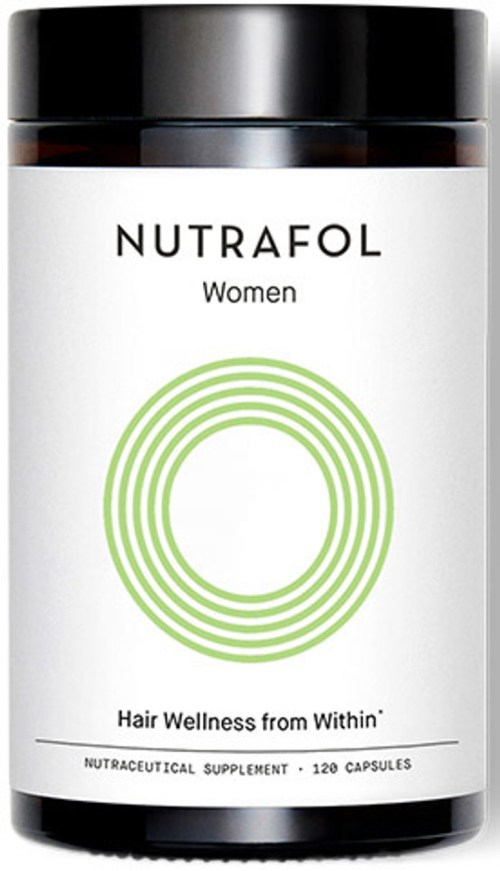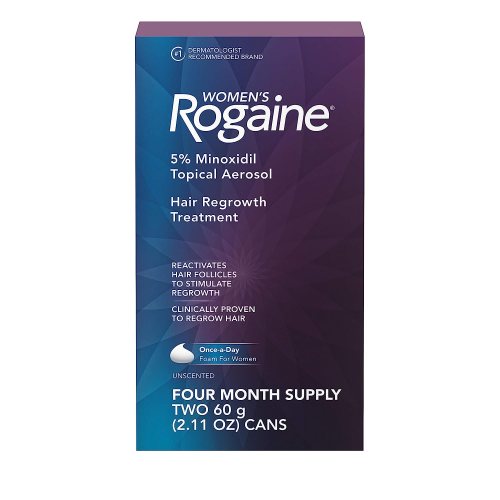Our editors independently select these products. Making a purchase through our links may earn Well+Good a commission
A Dermatologist and a Gynecologist Explain Why Heavy Periods Impact Hair Health—And How To Cope
If you're experiencing heavy periods and hair loss or slowed hair growth, they're connected. A dermatologist and a gynecologist explain why.

Last year, I was chatting with a new stylist about my goals to revive my dull hair and speed up growth, which felt very stagnant. It came up that I’d recently had a fibroid (which has since been removed) that caused bleeding so heavy that I needed a blood transfusion. She noted that my dry, slow-to-grow strands could be connected to the blood loss, and that once I got it under control, I might see a change in my hair. I tapped a dermatologist and an OB-GYN to confirm, and it turns out she was totally right—there’s a big connection between heavy periods, hair loss, and slowed hair growth.
Experts in This Article
board-certified dermatologist
Los Angeles-based internal medicine physician
OB/GYN and women’s health expert
board-certified dermatologist
Heavy menstrual bleeding (defined by the Mayo Clinic as soaking through one or more pads or tampons every hour for several consecutive hours) can cause iron-deficiency anemia. And iron is needed to make hemoglobin, which is what oxygen sticks to so it can be transported throughout the body. And hair follicles need oxygen to thrive.
“Everything in your body requires oxygen, so if you have a deficiency in hemoglobin to carry oxygen, your body is smart and it will deliver oxygen to the most necessary parts,” says Jessica Shepherd, MD, a board-certified OB-GYN in Dallas, Texas. “Your major organs need oxygen more, so you’re going to have a lack of oxygen going to your hair follicles, and that’s when you might see a decrease in hair growth or increase in hair loss.”
Heavy menstrual bleeding can be the result of fibroids, hormone imbalances like PCOS, endometriosis, and more. The most important thing you can do is get to the root of the problem. “If it’s an iron deficiency issue, some people might need a blood transfusion, some people can take iron supplements,” says Dr. Shepherd, who is also chief medical officer at Verywell Health. As you replenish the iron, you can work with your doctor to figure out how to stop the heavy bleeding—exploring everything from hormonal birth control to surgery.
In the meantime, Dina Strachan, MD, a board-certified dermatologist in New York City, says there are things you can do to promote hair growth, like trying hair-wellness supplements.
“I consider those more like changing the soil,” says Dr. Strachan. For example, if you have a plant with a fungal infection, you can treat the infection but also give it some new nutrient-rich soil. “You address the fungal infection, but giving it good nutrition also helps as well,” she adds. The same goes for your hair—you have to address the root cause, but adding in some extra nutrients can help things along.”
Jessica Cho, MD, an integrative medicine doctor and hair restoration specialist, adds that while these supplements can help revive the strands you do have—they won’t make new hair grow. “Hair vitamins are going to address the hair shaft problems like the hair texture, brittleness, and dryness—they can actually make the hair enriched and shinier,” says Dr. Cho. “When people are using collagen, peptides, Nutrafol ($88), hair vitamins and all that conditioning, it is more for your hair shaft of existing hairs.” For growth, you can try medical options, like an over-the-counter minoxidil solution ($47), or prescriptions like Finasteride or oral minoxidil.

Nutrafol, Women — $88.00
“Nutrafol is a great hair supplement with just the right amount of biotin to avoid acne along with turmeric, ashwagandha, and saw palmetto,” says Rita Linkner, MD, a board-certified dermatologist in New York City.

Women's Rogaine, 5% Minoxidil Foam — $47.00
Minoxidil is a medication that promotes hair growth by shortening the telogen, or resting, phase of the hair and causing hair to enter the anagen, or growing, stage of hair growth.
You can also explore at-home scalp-stimulating techniques like microneedling and LED therapy that boost scalp circulation and thus the flow of oxygen and nutrients. Additionally, there are in-office treatments like platelet-rich plasma (PRP) injections, but because PRP uses your blood, it can only be effective if you have healthy, oxygen-and-nutrient-rich blood. “PRP can be inconsistent because it is dependent on the quality of the platelets of the individual, or the growth factors in their platelets,” says Dr. Strachan. “I see a lot of patients who have already had PRP, and it wasn’t successful.”
The most important thing you can do is work with your doctor to determine and treat the root cause of your bleeding. That way, you can keep your blood count at a level where your body doesn’t have to decide between sending oxygen to your organs or your scalp—there will be enough blood to go around.
“This is something that definitely can be restored,” says Dr. Shepherd. “It does take time because hair growth happens in stages. But first, it’s about finding a solution and making sure we’re working towards decreasing the bleeding, and then making sure that we’re helping restore the hair in the best way possible, that’s healthy. But it does take time.”
Sign up for the Well+Good SHOP Newsletter
Get exclusive deals on wellness, beauty, fitness, and food products that have been hand-picked by our editors.
Got it, you've been added to our email list.










